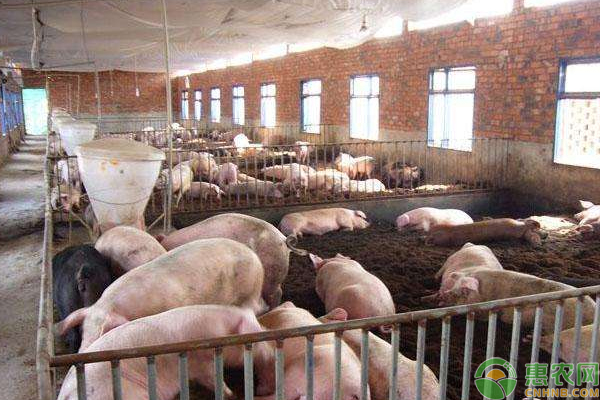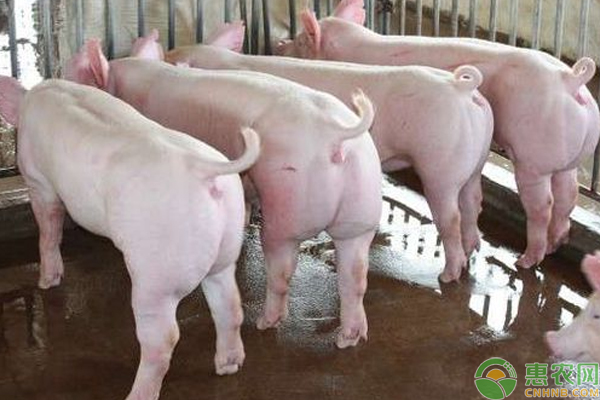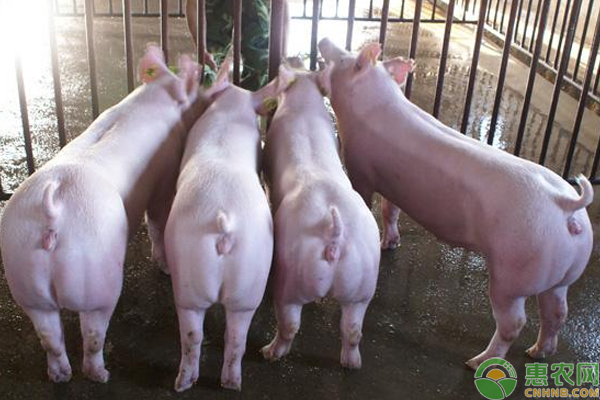Pigs are one of the livestock and the first choice for personal breeding and breeding. Do you know the diseases that are prone to pig breeding? In Xiaobian's view, if you want to raise high efficiency in breeding pigs, then disease prevention and feeding management is very important. The following are detailed prevention and treatment techniques for common pig diseases. Don't miss out on the farmers.

1. Preventive measures for common pig diseases in small-scale pig raising
1.1 Feeding prevention measures
During the small-scale pig raising process, the feed can not be adjusted from the pig's growth needs, and the corresponding feed should be matched according to the seasonal changes. At the same time, the freshness of the raw materials can be checked and analyzed, and the mold is removed. The agent is suitably added to promote an effective reduction of mycotoxins in the feed. In addition, small-scale farmers should also pay attention to whether the pig food has deteriorated and whether the drinking water is clean in real time, and match the corresponding proportion of nutrient feed according to the specific conditions.
1.2 Hygiene measures
Regardless of size, ensuring the dryness of the pigsty is a very important job. Farmers should regularly clean and clean the pig pens, especially the cleaning feed tanks should be cleaned frequently, and at the same time, ventilation and cold protection should be done. In addition, the fishermen should regularly carry out corresponding disinfection work on the relevant germplasms of the pigs in time.

1.3 Preventive measures for immune health
In spite of the small size of the pigs, the farmers are required to carry out scientific immunization work for each pig, and at the same time, analyze the antibody levels of the pigs, and then carry out the corresponding immunization plan to prevent unforeseen accidents. In general, farmers should regularly use certain doses of drugs to prevent and treat related diseases in pigs, but long-term use of such drugs may lead to the production of antibodies in pigs. Therefore, it is necessary to use an appropriate amount of antibiotics, and develop appropriate immunization plans in terms of local common outbreaks, maternal antibody levels, and pig age, and determine the type of inoculation and the type of vaccine. It is necessary to ensure that the vaccine used is produced by a regular manufacturer. Pay attention to the storage and transportation links.
Anti-viral related drugs are strictly applied to pigs before they are immunized. Breeders must carefully disinfect the inoculation equipment used, and prepare certain adrenaline for accidental needs. For pigs suspected of being sick, the farmer should isolate it and delay its immunization until the sick pig is healed and then immunized. For the immune effect, the fishermen can regularly test the immune antibodies of the pigs to effectively determine the immune effect.
1.4 Precautions against deworming
The growth rate of pigs and the consumption ratio have a great influence on the economic benefits of the farmers. The parasites have a great impact on the growth rate of the pigs. Therefore, the farmers must determine the deworming measures and drive the specific conditions of the pigs. The insect cycle, and the corresponding insect repellent drugs for different parasites. Normally, farmers should perform a deworming operation on pigs every three months and determine the type of deworming drugs according to local epidemiology and climate change.

2. Treatment of common swine diseases in small-scale pig raising
2.1 Prevention and treatment of pig digestive diseases
Common porcine digestive diseases are both bacterial and viral diarrhea. The symptom of viral diarrhea is that the pig manure dripped down like a liquid form, and in severe cases, the feces diarrhea is like spraying water. The symptoms of bacterial diarrhea are generally reflected in the form of pig feces. The farmer can treat the pig by injection of sputum, oxytetracycline or lincomycin. During the usual feeding process, the farmer can infer the physical condition of the pig based on the observed shape and color of the pig feces. If some pigs do not like eating, body shape and so on, they should clean up the pigsty in time and disinfect the pig's living area. In addition, the fishermen can add a certain amount of rice bran and antibiotics to the feed during the feeding process to prevent the occurrence of diseases in the pig's digestive system.
2.2 Prevention and treatment of swine gasping disease
After the pig has pig gastroenteritis, the breathing pattern is very obvious abdominal breathing, and the number of breaths is significantly increased, but the body temperature does not change much. In the case of severe pig gastroenteritis, sick pigs may experience loss of appetite or anorexia, and they may be lazy in the later stages of the disease, often experiencing asthma. For the treatment of swine gasping disease, the farmer can intramuscularly inject the pigs with 4-9 ml of tylosin per kg body weight once a day for 3 consecutive days. It can also be added to the feed at 200 grams per ton of lincomycin, and it can be fed for 3 weeks, and it can also achieve higher therapeutic effect. For pig gastroenteritis, prevention and control should be the mainstay. Self-supporting and self-supporting should be carried out, and newborn piglets should be vaccinated with swine gastroenteritis vaccine or attenuated vaccine in time to enhance their immunity.
2.3 Prevention and treatment of pig leg and foot disease
When the pig suffers from the early stage of foot and hoof disease, the symptoms are characterized by a swollen joint, and the rupture of the pig's foot gradually occurs. When the disease progresses to the later stage, the serious condition may make it difficult for the pig to complete the standing movement. For the treatment of this disease, pigs can usually be intramuscularly injected with dexamethasone and penicillin with 10 ml of Antongding. In order to effectively prevent the occurrence of swine foot and hoof disease, the farmer should keep the pigsty ventilated to ensure the dry and clean environment of the pig pens, thus effectively reducing the bacteria remaining in the pig pen. In addition, the pigs and pig pens should be regularly cleaned and disinfected, especially the sharp objects in the pigsty should be cleaned to avoid injury to the pig's feet.
2.4 Prevention and treatment of swine fever
Acute swine fever is more common, the body temperature of sick pigs will reach 40 °C or above, obviously anorexia, nasal discharge of concentrated fluid, accompanied by conjunctivitis, vomiting from time to time, and blood in feces. At the early stage of the disease, there are red spots or a bit of bleeding in the skin of the ear, the inside of the femur, and the abdomen. The death occurs within two weeks after the onset, and the mortality rate is high. Hog is very contagious, and if the control measures are not in place, it will cause a devastating blow to the small-scale pig breeding model. When there is a swine plague in the herd, the farmer should immediately isolate and disinfect the sick pig. At the same time, according to the incidence of the sick pig, the 7.5 ml high-calorie needle per kilogram of body weight is used for intramuscular injection in the early stage, and the injection is injected at 5 ml per kg of body weight. . At the same time, the use of sulfa drugs and antibiotics to avoid secondary infections. It is also possible to use the live swine fever vaccine to immunize sick pigs. The breeder can determine the amount of vaccination according to the specific situation. Do not increase the amount of vaccine to prevent the recurrent pig scorpion virus. After that, the immune antibodies of the swine fever are regularly tested to grasp the immune effect. In addition, the farmer should do a good job of prevention of swine fever in the daily feeding process, and usually use the live swine fever vaccine to immunize the pigs.
The most feared disease in pig breeding is the disease. The main reason is the type of pig disease, which is difficult to distinguish. The second is that the pig disease is highly contagious. The multi-scale farm has serious impact. Therefore, the breeding should be carried out in advance to prevent disease, or it will cause serious economics. loss.
Being a reliable supplier of above products, Medton works under the following main principles: quality, credit, innovation, and close partnership with customers.
Marine Lifeguard Rescue
Medton Medical , https://www.medtonmedical.com